Sotheby's International Realty
- 138 Avenue Victor Hugo
- 75116 PARIS, France
- +33 1 40 60 50 00
Sotheby's International Realty
- 50 rue d'Auteuil
- 75016 PARIS, France
- +33 1 56 26 56 55
Sotheby's International Realty
- 82 Avenue de Wagram
- 75017 PARIS, France
- +33 1 46 22 27 27
Sotheby's International Realty
- Place Sainte Foy - 2 Rue de Chézy
- 92200 NEUILLY, France
- +33 1 41 43 06 46
Sotheby's International Realty
- Place Sainte Foy - 2 rue de Chézy
- 92200 NEUILLY, France
- +33 1 41 25 00 00
Sotheby's International Realty
- 37-39 rue de Turenne
- 75003 PARIS, France
- +33 1 48 87 14 41
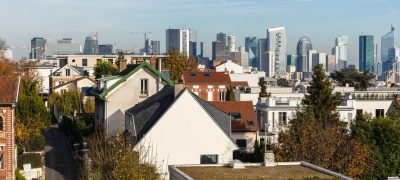
Suresnes
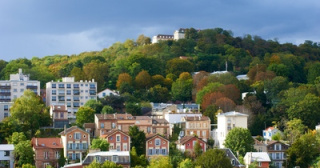
A Perfect Blend of Residential Charm and Urban Dynamism
Suresnes, located to the west of Paris, perfectly combines the charm of residential living with urban dynamism. Nestled between Mont Valérien and the Seine, Suresnes offers a privileged and refined lifestyle, ideal for families and professionals seeking a peaceful environment close to the capital.
6 Neighborhoods
They each have their own identity and actively contribute to the City Council through the neighborhood councils that represent them.
- City Center
- Mont-Valérien
- République
- Écluse-Belvédère
- Liberté
- Cité-Jardins
An Exceptional Living Environment
Suresnes stands out for its lush green spaces and breathtaking panoramic views of Paris and its surroundings. Mont Valérien Park, with its hiking trails and picnic areas, provides a perfect natural setting for outdoor activities. The banks of the Seine offer peaceful strolls and picturesque views, perfect for unwinding after a busy day.
Luxury Real Estate in Suresnes
In terms of real estate, Suresnes offers a selection of prestigious properties that appeal to the most discerning buyers. The area is home to character houses, villas with private gardens, and high-end apartments. Residences often feature luxury amenities such as private pools, fitness spaces, and terraces with views of the Seine. Properties in Suresnes combine elegance and modern comfort, ensuring an exceptional living environment.
Real estate prices in Suresnes in July 2024 range from €7,898/m² to €8,418/m².
Activities and Leisure
The neighborhood of Suresnes is rich in cultural and leisure activities. The Jean Vilar Theater offers a varied program of shows and concerts, while the Museum of Urban and Social History of Suresnes (MUS) provides captivating exhibitions on local history. Sports enthusiasts will appreciate the numerous sports facilities, including tennis clubs, fitness centers, and boating clubs on the Seine.
A Lively Neighborhood Life
Suresnes is characterized by its friendly atmosphere and community spirit. The city center, with its elegant boutiques, cozy cafes, and local markets, creates a lively and welcoming ambiance. Community events, such as festivals and artisan markets, regularly enliven the streets, strengthening the sense of belonging and camaraderie among residents.
Why Choose Suresnes?
Choosing to live in Suresnes means opting for a lifestyle that combines prestige, comfort, and tranquility. The area offers unparalleled quality of life, with luxury properties, high-quality infrastructure, and proximity to Paris's cultural attractions and business centers. Suresnes attracts with its elegant residential atmosphere, panoramic views of Paris, and rich cultural heritage, offering a unique and prestigious living experience.
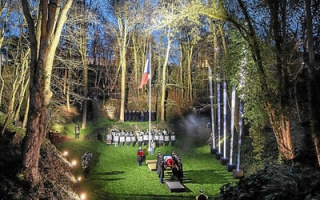
Liberté-Mont-Valérien: A Jewel in Suresnes
The Liberté-Mont-Valérien neighborhood, located in the west of Suresnes, is a true gem offering an exceptional living environment. Nestled between Mont Valérien, the highest point in the Paris region, and the banks of the Seine, this neighborhood is distinguished by its peaceful residential atmosphere and breathtaking panoramic views of Paris and its surroundings.
A Residential and Natural Environment
Liberté-Mont-Valérien is renowned for its green spaces and unique natural setting. Mont Valérien, with its park and hiking trails, is a favored spot for outdoor enthusiasts. Residents can enjoy peaceful walks and moments of relaxation in nature, all while being in close proximity to the capital. Parc du Mont Valérien, with its picnic areas and panoramic views, is an essential destination for families and sports enthusiasts.
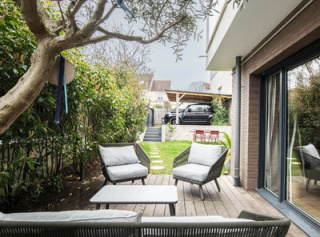
République
République
Located in the heart of Suresnes, the République neighborhood stands out for its perfect harmony between residential tranquility and urban dynamism. Nestled between the hills of Mont Valérien and the banks of the Seine, this area offers a unique living environment with exceptional panoramic views of Paris and its surroundings.
Strolling along the Seine's banks adds a touch of serenity to this already sought-after neighborhood known for its calm and natural setting.
Prestige Real Estate in République
In terms of luxury real estate, the République neighborhood offers a selection of prestigious properties that meet the expectations of the most discerning buyers. You will find primarily spacious and elegant houses, often situated in chic areas, as well as apartments in grand Haussmannian or contemporary buildings. These residences feature high-end amenities, such as luxurious finishes, breathtaking views of the Seine or Paris, and modern facilities.
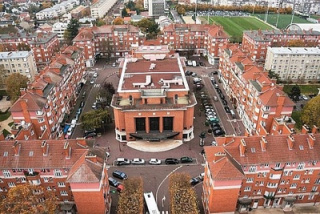
Cité Jardin
A Quality Life at the Heart of Cité Jardins
Cité Jardins is a neighborhood where every street and building reflects a story of elegance and refinement. The streets bear evocative names of humanist thinkers like Grotius and Jean Jaurès, symbolizing a prestigious cultural and intellectual heritage. This neighborhood embodies the spirit of these thinkers, blending charming buildings and pavilions to offer a peaceful life, supported by places of worship, educational and cultural spaces. The imprint of the 1920s is preserved to this day, providing passersby with a journey through time through its typical architecture and pleasant living spaces.
Downtown
The “English village” (“Village Anglais”), such is the name given to the housing estate built in 1920, it derives this name from its typically British architecture. These homogeneous houses, aligned along a street, a pleasant place to stroll, facing colorful façades like rue de La Belle Gabrielle. Today, the heart of the city retains its original architecture.
Boulevard Henri Sellier: its name serving as a tribute to the former mayor of Suresnes, boulevard Henri Sellier was initially designed to respond to the increasing influx of visitors. It is the largest boulevard in Suresnes and connects the bridge to Boulevard de République. First bearing the name of boulevard de Versailles, the boulevard underwent several modifications. It is now possible to walk there, in particular to visit the Coty factory.




